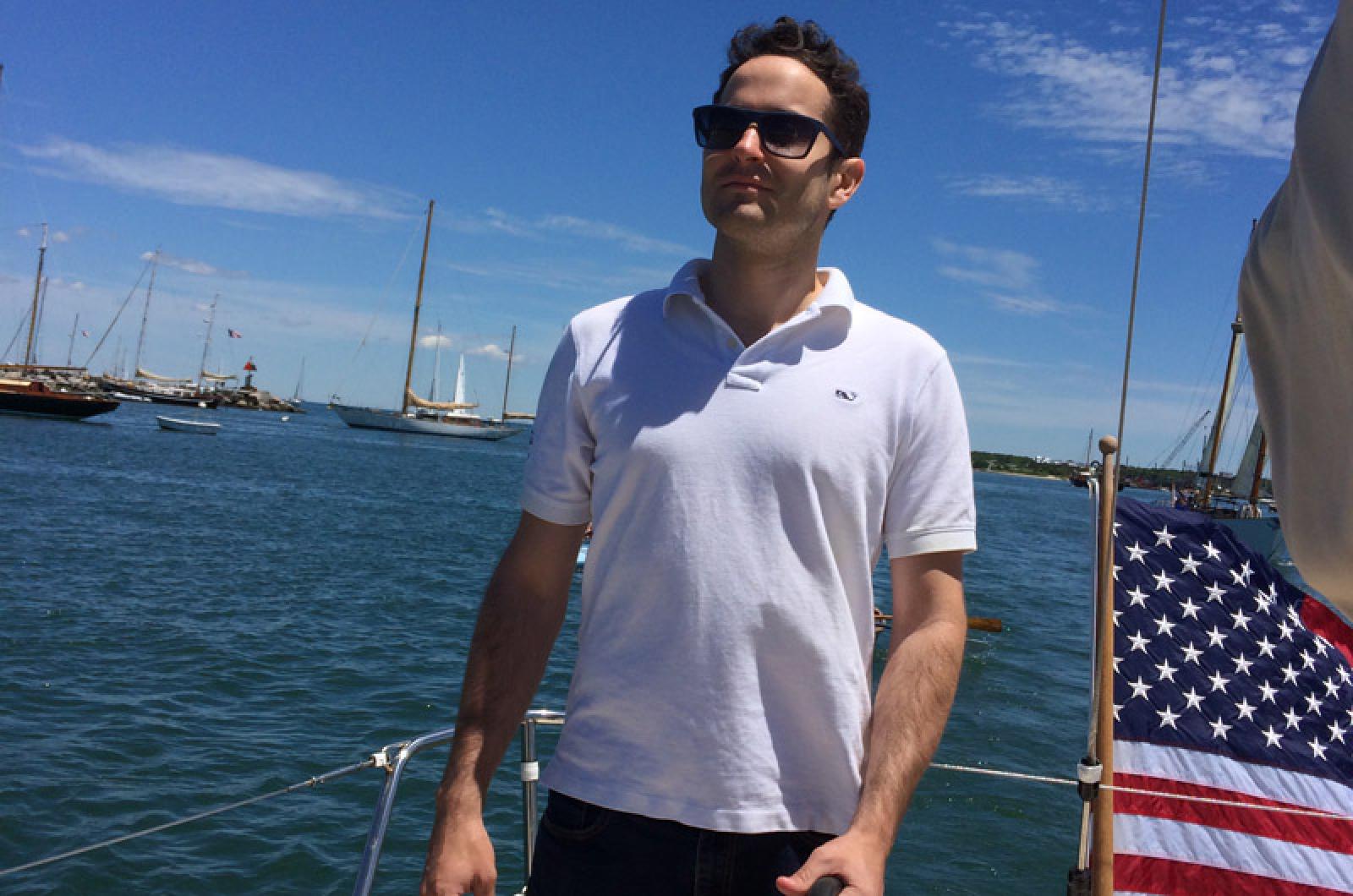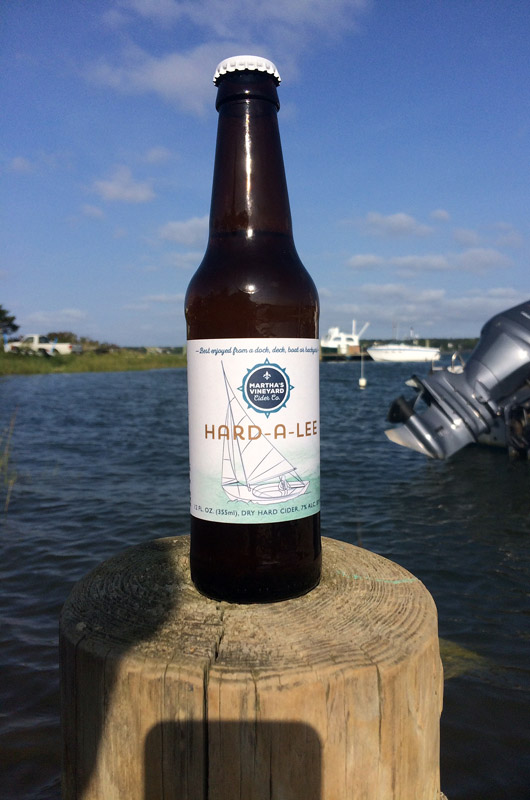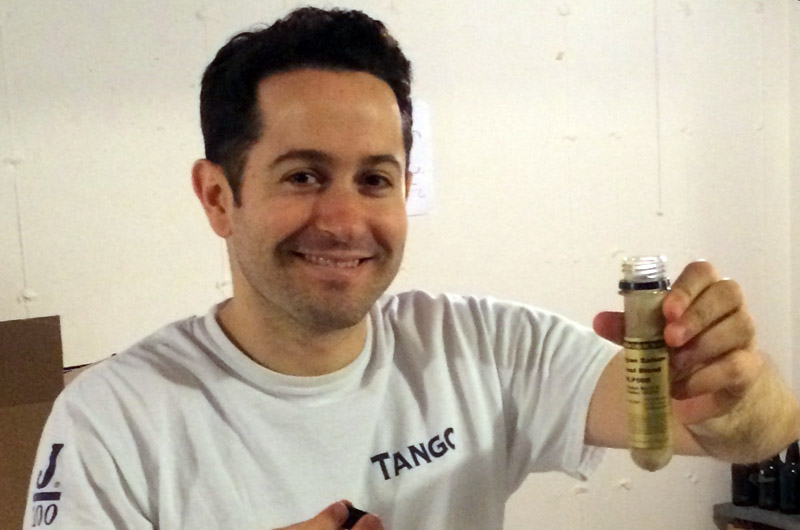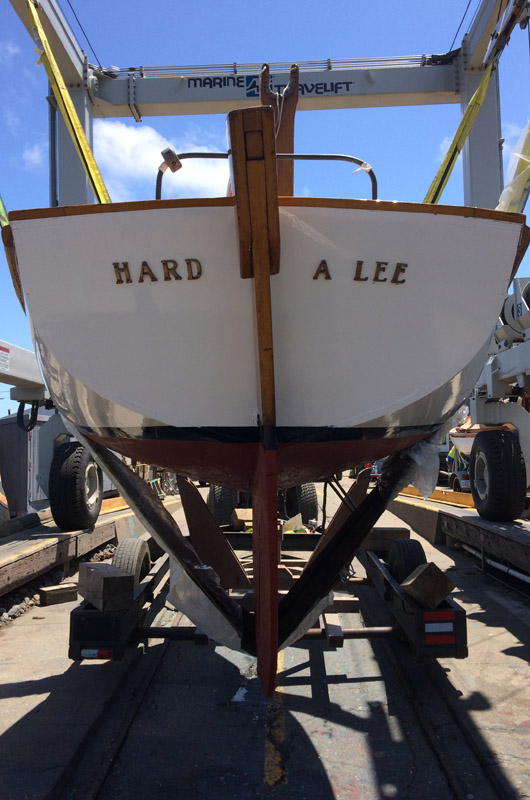When Rob Hale graduated from the Sloan School of Management at MIT a little more than two years ago, he took note of the infectious entrepreneurial energy among the graduates, many of whom wanted to create new companies.
While most of his classmates focused on the tech industry, Mr. Hale, a native Vineyarder, turned in a different direction. He went into the hard cider business.
This August, the first bottles from Martha’s Vineyard Cider Co. were delivered to Island restaurants. The inaugural cider is called Hard A Lee, named after a wooden boat that has been in the Hale family, which owns the Martha’s Vineyard Shipyard, for more than 90 years. An image of the boat is on the cider label.
Hard A Lee is also a nautical term used when tacking or changing direction. Like when one turns from business school and shipyards to cider-making.
“Cider is something old but something new,” Mr. Hale, 29, said this week in a phone interview. “It was the staple product in the 1700s and 1800s in terms of alcoholic beverages.”
The historical perspective excited Mr. Hale, who majored in history and economics at Emory University. “It’s something traditional in America,” he said. “Also it’s new, because it’s making a revival.”
Cider is one of the fastest growing alcohol beverages on the market, Mr. Hale said, with a consumer base that includes a younger, more female demographic.
The process of making cider was also appealing, he said. “Coming from a place like Martha’s Vineyard, especially growing up working for my family’s business... I really enjoyed tangible product,” he said. “That is to say, not really tech-based product.”
So began a year-and-a-half-long exploratory journey into the world of hard cider. Mr. Hale visited 30 different orchards, most of them in eastern Massachusetts, and created about 250 different cider varieties, some hits and others misses.
Friends and family served as taste-testers, trying the ciders, filling out comment cards and giving feedback about what worked.
Cider is classified as a winery when it comes to federal and state licensing, Mr. Hale said. So, to a degree, Martha’s Vineyard Cider Co. isn’t just the only cider company on the Island, it’s also the only winery on Martha’s Vineyard.
Making hard cider is a bit like making wine, Mr. Hale added. Simply put, wine is made from fermented grape juice; hard cider is made from fermented apple juice.
Different types of cider can be created by mixing different apples, which changes the level of sugars, acids and tannins. Yeast is used, like in beer, and the kinds of yeast also vary and elicit different tastes. The fermentation process has to be done in the right time frame and has different steps that change the cider’s taste and clarity.
About nine months ago, Mr. Hale had narrowed down the cider varieties to three stand-outs. A local restaurant joined his cadre of taste testers, and with their input a winner emerged: a lighter, drier cider with strong apple notes, he said, and a bit of effervescence.
“I’m kind of tired of tasting the overly-sweet, kind of almost bland ciders out there and I wanted something different,” he said. “I wanted something that was thirst-quenching after a long day, yet had a robust enough flavor profile to pair with your favorite meat, seafood, cheese or dessert.”
Mr. Hale spent the spring mastering the Hard A Lee cider style, adjusting his operation to produce larger batches, and going though federal, state and local licensing processes.
At the end of August, the cider had its debut at Beach Road and State Road restaurants. The "nautically-inspired cider" can also be found at 20byNine and the Barn Bowl & Bistro in Oak Bluffs.
Mr. Hale said he’s committed to working with “restaurants around the Island that have a dedication to either locally-sourced ingredients, or quality ingredients, or supporting the Island community.”
The company will expand partnerships in the coming months, he said. The company also has a website and active Facebook, Twitter and Instagram accounts.
“I think it’s a great way of telling a story and also sharing in the process with customers or people who are just interested,” he said.
“To me, taking on this adventure was a change of direction," Mr. Hale added. "Boats offer an escape, and to me starting this company was an adventure. And also the cider is an adventure for other people looking at a menu and deciding what to order.”
Right now Martha’s Vineyard Cider Co. is largely a one-man operation with a lot of help from Mr. Hale’s family and friends. Mr. Hale said he’s looking to add more staff, and will investigate producing other cider varieties, perhaps by next summer.
“I already have a couple in mind, but there’s never a problem with more taste testing,” he said.
Today’s ciders come in styles and flavors that vary widely from what early Vineyarders likely drank. Besides toying with the types of apples used, flavors from citrus to chocolate can be added to the mix. One West Coast company makes a wasabi cider, Mr. Hale noted.
“Not the route I’m trying to go,” he said.







Comments (2)
Comments
Comment policy »